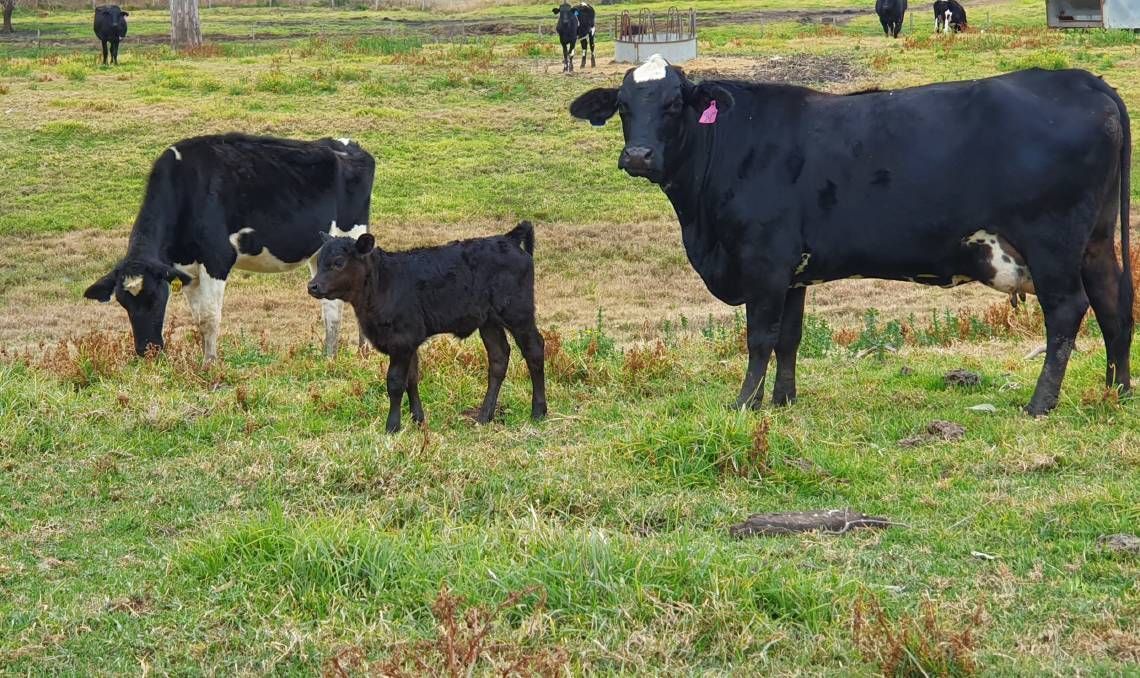
SELLARS SOLID RESULTS WITH ANGUS CROSS
A match: Three years ago the Sellars family began joining Cochrane Angus bulls to a portion of their Friesian and Jersey crossbred heifers.
Dairy producers, Anthony Sellars and Louise Black, have seen solid results since deciding to introduce Angus bulls into their smaller beef cattle program.
Mr Sellars and Ms Black primarily milk 400 Friesian and Jersey cows, on the flat to slightly undulating country, of which 80 per cent is under irrigation, at Christmas Creek, 20km south of Beaudesert, in the Scenic Rim region of Queensland.
It was three years ago, when they were looking for bulls to put over a portion of their Friesian and Jersey crossbred heifers that they decided on Angus.
"Most of the resulting progeny are sold at a week old to one of our friends nearby, who picks them up and rears them. We sell most of the Angus-cross calves to him at a fixed price. I could probably be getting more for them at present, but the price balances out when the market is down," Mr Sellars said.
He said the bulls are put in the paddock with the heifers four times each year.
"They're joined to the heifers for six weeks and then have six weeks off. Through this process we've been able to produce 140 calves with two bulls in the space of three months."
The bulls were purchased from John Cochrane, Cochrane Angus, situated close by at Jimboomba.
"It was through speaking to our agent at Elders about what we were trying to accomplish with the beef cattle operation that he suggested getting in touch with John.
"The Cochrane bulls have performed well for us, providing us with great ease of calving. If we're ever looking to buy more Angus we'll go back to John."
Their children Ashley, Tegan and Patrick represent the fourth generation of the Sellars family on the property, which was purchased a century ago this year.
Mr Sellars said the deluge of rain they've received this year had put them behind schedule in regards to productivity, as well as creating issues with the cattle.
"We received 1270mm to date this year, including 178mm in late May, which really hurt us. Mastitis has been a big issue in the dairy herd. We've also only gotten about a third of our summer crop planted and a quarter of our winter crop planted because it was too wet."
